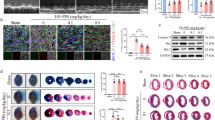Abstract
The effects of Cl channel blockers on large-conductance (LC-type) Cl channels of cultured vascular smooth muscle cells (VSMC) were studied in order to characterize the channel pharmacologically. Intracellular disulphonic stilbene derivatives, such as 4,4′-diisothiocyanostilbene-2,2′-disulphonic acid (DIDS) and 4-acetamido-4-isothiocyanostilbene-2,2′-disulphonic acid (SITS) inhibited Cl channel activity in a dose-dependent manner. An obvious inhibitory effect of DIDS in this condition was obtained at concentrations higher than 5 μM, and the complete inhibition was obtained at around 100 μM, which was almost 10 times less than the effective dose of SITS. The inhibitory effect of DIDS was reversible at a drug concentration of lower than 50 μM. Single-channel conductance decreased as the concentration of DIDS increased. This decrease in the conductance was a consequence of unresolved openings of the channel due to fast blocking and unblocking rates of the drug. The Cl channel was also obviously inhibited by extracellular DIDS at a concentration of 1 mM. In addition, in cell-attached patches, 500 μM DIDS applied extracellularly inhibited Cl channel activated by the application of polymyxin B. We also investigated the effect of Zn on Cl channels in VSMC. Intracellular Zn dose dependently and reversibly blocked the channel at the positive intracellular potential range, whereas at the negative intracellular potential range it did not block the channel activity. Results in this study suggest the diversity of Cl channels among various tissues.
Similar content being viewed by others
References
Allgaier C, Hertting G (1986) Polymyxin B, a selective inhibitor of protein kinase C, diminishes the release of noradrenaline and the enhancement of release caused by phorbol 12,13-dibutyrate. Naunyn-Schmiedeberg's Arch Pharmacol 334:218–221
Blatz AL, Magleby KL (1983) Single voltage-dependent chloride-selective channels of large conductance in cultured rat muscle. Biophys J 43:237–241
Bretag AH (1987) Muscle chloride channels. Physiol Rev 67:618–724
Bridges RJ, Worrell RT, Frizell RA, Benos DJ (1989) Stilbene disulfonate blockade of colonic secretory Cl-channels in planar lipid bilayers. Am J Physiol 256:C902-C912
Cabantchik ZI, Rothstein A (1974) Membrane proteins related to anion permeability of human red blood cells. I. Localization of disulfonic stilbene binding sites in proteins involved in permeation. J Membr Biol 15:207–226
Coulombe A, Duclohier H, Coraboeuf E, Touzet N (1987) Single chloride-permeable channels of large conductance in cultured cardiac cells of new-born rats. Eur Biophys J 14:155–162
Evans MG, Marty A, Tan YP, Traumann A (1986) Blockage of Ca-activated Cl conductance by frusemide in rat lacrimal glands. Pflügers Arch 406:63–68
Franciolini F, Nonner W (1987) Anion and cation permeability of a chloride channel in rat hippocampal neurons. J Gen Physiol 90:453–478
Gray PTA, Bevan S, Ritchie JM (1984) High conductance anion-selective channels in rat cultured Schwann cells. Proc R Soc Lond [Biol] 221:395–409
Hamill OP, Marty A, Neher E, Sakmann B, Sigworth FJ (1981) Improved patch-clamp techniques for high-resolution current recording from cells and cell-free membrane patches. Pflügers Arch 391:85–100
Inoue I (1985) Voltage-dependent chloride conductance of the squid axon membrane and its blockade by some disulfonic stilbene derivatives. J Gen Physiol 85:519–537
Isaacson A, Sandow A (1963) Effects of zinc on responses of skeletal muscle. J Gen Physiol 46:655–677
Kanemasa T, Banba K, Kasai M (1987) Voltage-gated anion channel of the electric organ of Narke japonica incorporated into planar bilayers. J Biochem 101:1025–1032
Kimes BW, Brandt BL (1976) Characterization of two putative smooth muscle cell lines from rat thoracic aorta. Exp Cell Res 98:349–366
Knauf PA, Rothstein A (1971) Chemical modification of membranes. I. Effects of sulfhydryl and amino reactive reagents on anion and cation permeability of the human red blood cell. J Gen Physiol 58:190–210
Kolb HA, Brown CDA, Murer H (1985) Identification of a voltagedependent anion channel in the apical membrane of a Cl−-secretory epithelium (MDCK). Pflügers Arch 403:262–265
Maddy AH (1964) A fluorescent label for the outer components of the plasma membrane. Biochim Biophys Acta 88:390–399
Miller C, White MH (1984) Dimeric structure of singel chloride channels from Torpedo electroplax. Proc Natl Acad Sci USA 81:2772–2775
Neher E, Steinbach JH (1978) Local anaesthetics transiently block currents through single acetylcholine-receptor channels. J Physiol (Lond) 277:153–176
Nelson DJ, Tang JM, Palmer LG (1984) Single-channel recording of apical membrane chloride conductance in A6 epthelial cells. J Membr Biol 80:81–89
Palade PT, Barchi RL (1977) On the inhibition of muscle membrane chloride conductance by aromatic carboxylic acids. J Gen Physiol 69:879–896
Russel JM, Brodwick MS (1979) Properties of chloride transport in barnacle muscle fibers. J Gen Physiol 73:343–368
Saigusa A, Kokubun S (1988) Protein kinase C may regulate resting anion conductance in vascular smooth muscle cells. Biochem Biophys Res Commun 155:882–889
Scheide JI, Zadunaisky JA (1988) Effects of a chloride channel blocker on bullfrog corneal epithelium, Am J Physiol 254:C519-C525
Schneider GT, Cook DI, Gage PW, Young JA (1985) Voltage sensitive, high-conductance chloride channels in the luminal membrane of cultured alveolar (type II) cells. Pflügers Arch 404:354–357
Schwarze W, Kolb HA (1984) Voltage-dependent kinetics of an anion channel of large unit conductance in macrophages and myotube membranes. Pflügers Arch 402:281–291
Shiina T, Tazawa M (1987) Ca2+-activated Cl− channel in plasmalemma of Nitellopsis obtusa. J Membr Biol 99:137–146
Soejima M, Kokubun S (1988) Single anion-selective channel and its ion selectivity in the vascular smooth muscle cell. Pflügers Arch 411:304–311
Stanley EF, Ehrenstein G, Russel JT (1988) Evidence for anion channels in secretory vesicles. Neuroscience 25:1035–1039
Welsh M (1986) Single apical membrane anion channels in primary cultures of canine tracheal eptihelium. Pflügers Arch 407:S116-S122
Woll KH, Leibowitz MD, Neumcke B, Hille B (1987) A high-conductance anion channel in adult amphibian skeletal muscle. Pflügers Arch 410:632–640
Yellen G (1984) Ionic permeation and blockade in Ca2+-activated K+ channels of bovine chromaffin cells. J Gen Physiol 84:157–186
Author information
Authors and Affiliations
Rights and permissions
About this article
Cite this article
Kokubun, S., Saigusa, A. & Tamura, T. Blockade of Cl channels by organic and inorganic blockers in vascular smooth muscle cells. Pflügers Arch 418, 204–213 (1991). https://doi.org/10.1007/BF00370515
Received:
Revised:
Accepted:
Issue Date:
DOI: https://doi.org/10.1007/BF00370515




